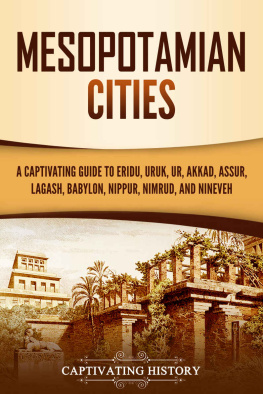Notre-Dame de Paris
A Captivating Guide to One of the Most Famous Catholic Cathedrals of Medieval Europe
Copyright 2019
All Rights Reserved. No part of this book may be reproduced in any form without permission in writing from the author. Reviewers may quote brief passages in reviews.
Disclaimer: No part of this publication may be reproduced or transmitted in any form or by any means, mechanical or electronic, including photocopying or recording, or by any information storage and retrieval system, or transmitted by email without permission in writing from the publisher.
While all attempts have been made to verify the information provided in this publication, neither the author nor the publisher assumes any responsibility for errors, omissions or contrary interpretations of the subject matter herein.
This book is for entertainment purposes only. The views expressed are those of the author alone, and should not be taken as expert instruction or commands. The reader is responsible for his or her own actions.
Adherence to all applicable laws and regulations, including international, federal, state and local laws governing professional licensing, business practices, advertising and all other aspects of doing business in the US, Canada, UK or any other jurisdiction is the sole responsibility of the purchaser or reader.
Neither the author nor the publisher assumes any responsibility or liability whatsoever on the behalf of the purchaser or reader of these materials. Any perceived slight of any individual or organization is purely unintentional.
Certainly there is matter here for many large volumes, and often the universal history of humanity in the successive engrafting of many arts at many levels, upon the same monument. The man, the artist, the individual, is effaced in these great masses, which lack the name of their author; human intelligence is there summed up and totalized. Time is the architect, the nation is the builder.
- Victor Hugo, The Hunchback of Notre-Dame
I t was with horror and sadness that the people of the world opened their social media or switched on their televisions on April 15th, 2019, only to see terrifying pictures of smoke and flames roaring around one of the most iconic outlines in France: that of Notre-Dame de Paris. The cathedral attracts more visitors than the Eiffel Tower (an estimated 13 million annually), and it has become a favorite with tourists and Parisians alike. Mass is still conducted there regularly, and when the fire destroyed part of Notre-Dame, all of the world mourned.
There is more to Notre-Dame, however, than just a tragic fire. Almost nine centuries of history lie behind its weathered towers, and its history is closely interlinked with that of France and its people. Its story has rung out through the ages as one of hope and survival, a tale of fear and destruction turning into courage and renovation. Its characters range from novelists to saints, from daredevils to kings, from generals to emperors. Its themes stretch across the spectrum, from humanity's greatest darkness to the warmth of the human spirit; it tells stories about exceptional brutality and exceptional grace, of the greatest terror of them all and of dauntless courage. Kings were crowned here, emperors seized power, Nazis paraded the streets, and saints strove valiantly to break sieges. There were wars and revolts, there were requiems and battles, there were suicides and stunts, and there were feats of human engineering that still baffle the modern mind.
And above all, now and always, then and forever, there is hope.
The world watched Notre-Dame burn. Now, it's time for the world to hear its story.
Chapter 1 Before Notre-Dame

I llustration I: The Pillar of the Boatmen, as reconstructed from pieces discovered beneath Notre-Dame de Paris
The excavation was hot, dark, and sweaty work, not made any easier by the knowledge of the mighty cathedral that towered just above. The foreman of the band of workers that were laboring away in the darkness was painfully aware that one of France's most important monuments was directly above him. He mopped his brow, looking over the row of men that were slowly and painstakingly chipping away at the soil. The work progressed at a snail's pace by hand, but the utmost care had to be taken to avoid disturbing the church above. The foreman gritted his teeth and shook his head, inwardly cursing the authorities that had decided that it was really necessary to excavate space to create additional tombs for the archbishops directly beneath the nave of Notre-Dame. Couldn't they just be buried in graveyards like normal people?
Then, a workman called out to him. The foreman raised his chin. The worker had found somethingsomething that he didn't think should be there. A curious band of men gathered around him, and the foreman shouldered his way through, grumbling to himself about these workmen. Part of them would always be looking for diamonds when they should be moving dirt.
But when he saw it, he knew that this time the discovery was no figment of some worker's imagination. It was a strange, square piece of stone, a corner so precise that it had to have been built by human hands. The workmen murmured in awe as the foreman reached out and brushed some of the dirt away to reveal carvingsmultitudes of them, etched into the stone everywhere that he was able to dig the soil away. Men and women, strange beasts, and none of them familiar to any of the men standing around. The more of the strange object that the men could reveal, the more certain the foreman became of one thing: This was no Roman Catholic relic. This was something completely different.
* * * *
T he year was 1710, and a band of workmen excavating an area beneath the nave of Notre-Dame de Paris had just stumbled upon the oldest monument ever discovered in France. This work of a guild of boatmen in Roman times, called the Pillar of the Boatmen, was created in honor of Tiberius Caesar in the first century CE. It was dedicated to the Roman god Jupiter, and its skillfully carved surface featured Roman gods and fragments of the Gallic mythology of which we still currently know so little about. It had once stood in a Gallo-Roman temple located where the current Notre-Dame de Paris has stood for more than 800 years.





















